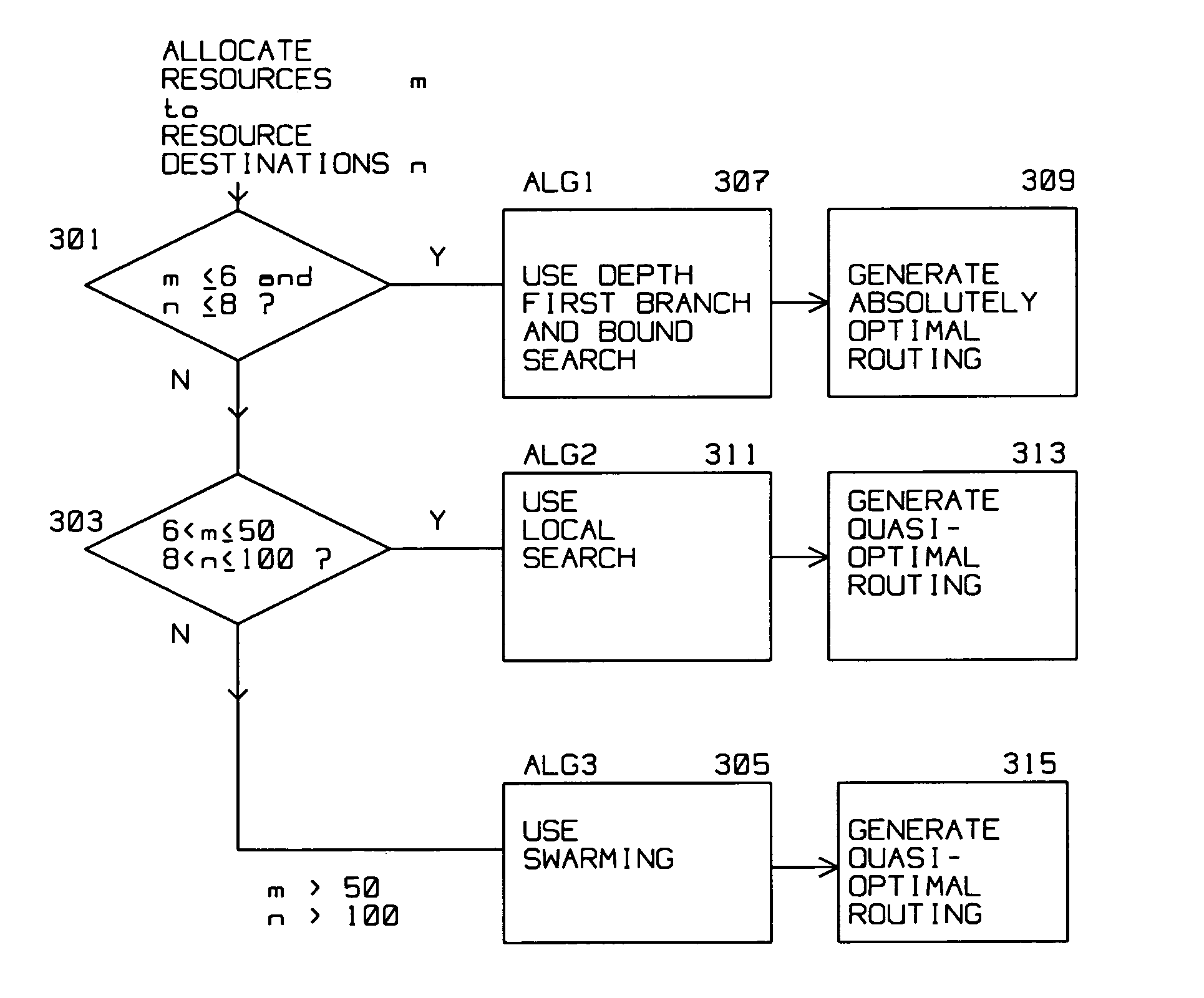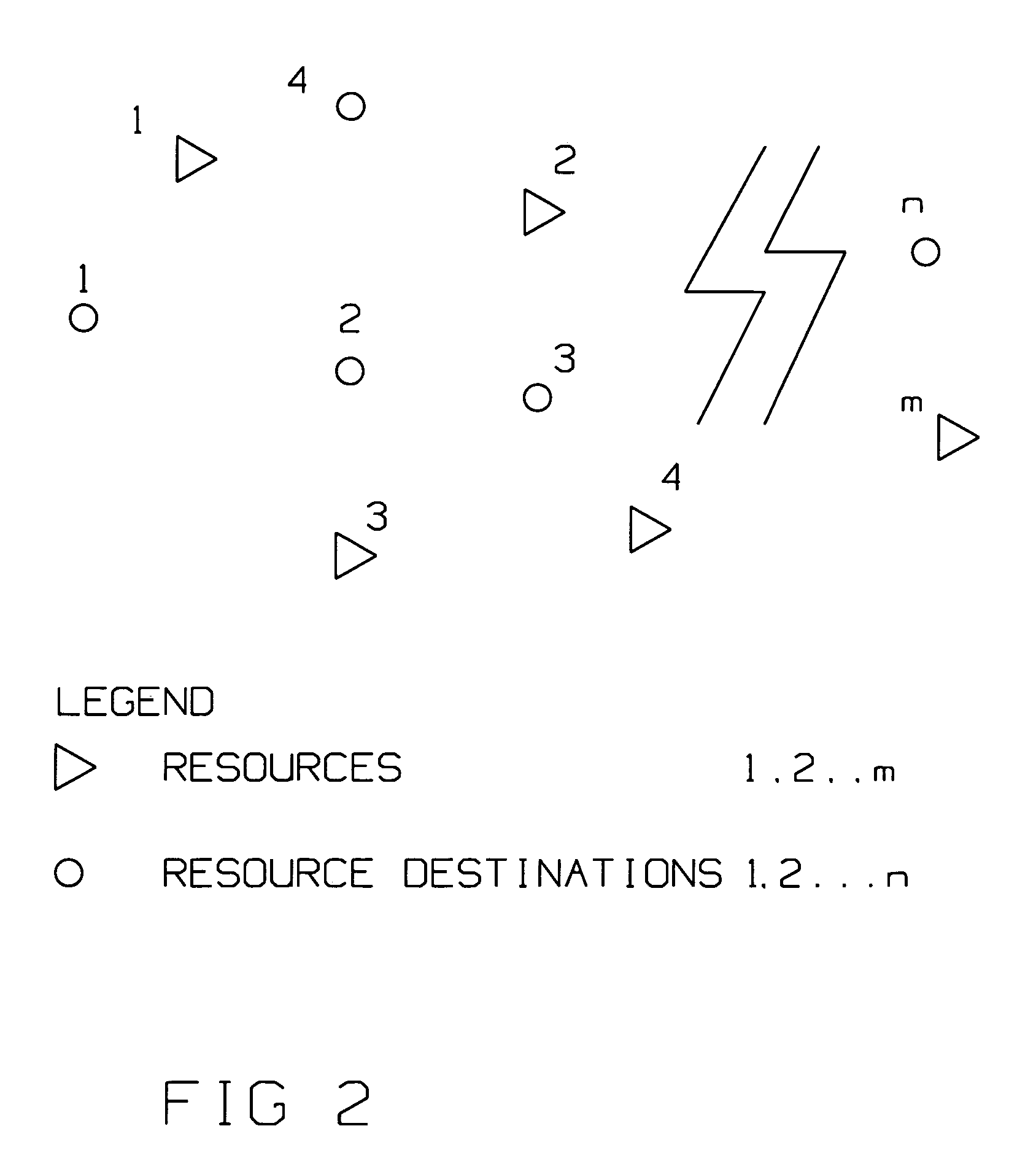Method for realtime scaling of the vehicle routing problem
a realtime scaling and vehicle technology, applied in process and machine control, navigation instruments, instruments, etc., can solve problems such as complex allocation problems, routing problems, and increasing complexity of resource allocation solutions
- Summary
- Abstract
- Description
- Claims
- Application Information
AI Technical Summary
Benefits of technology
Problems solved by technology
Method used
Image
Examples
Embodiment Construction
[0016]FIG. 1 is an illustration of two possible routes taken by a resource (single vehicle) to a plurality of resource destinations descriptive of the routing problem solved by the prior art. Route A routes the resource from START to resource allocations (destinations) D1, D2, D3 D4 D5 and D6 in sequence. In contrast, Route B routes the resource to the same 6 resource allocation (destinations), but in a different order then Route A. Route B goes to destination D5 first, followed by D6, then D4, D2, next to D3, finally to D1. Route A may be optimal given one set of constraints, while Route B is optimal given a second, different set of constraints. For example, if it is critical that resource allocation D1 be serviced first, having a high priority, then Route A is most likely optimal, compared to Route B. Conversely, if resource allocation D5 has highest priority, it is likely Route B would be optimal, as compared to Route A. The computation of the routing problem has an absolute opti...
PUM
 Login to View More
Login to View More Abstract
Description
Claims
Application Information
 Login to View More
Login to View More - R&D
- Intellectual Property
- Life Sciences
- Materials
- Tech Scout
- Unparalleled Data Quality
- Higher Quality Content
- 60% Fewer Hallucinations
Browse by: Latest US Patents, China's latest patents, Technical Efficacy Thesaurus, Application Domain, Technology Topic, Popular Technical Reports.
© 2025 PatSnap. All rights reserved.Legal|Privacy policy|Modern Slavery Act Transparency Statement|Sitemap|About US| Contact US: help@patsnap.com



